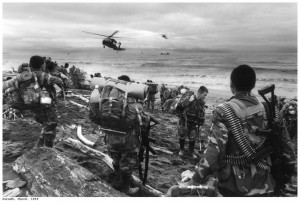 I have a new article that was just published in the most recent issue of Environment and Planning D: Society and Space titled, “Everyday State Formation: Territory, Decentralization, and the Narco Land-Grab.” The lag between writing and printing, of course, gives me enough mental distance to make me wish I’d done some things differently in the piece, but I’m still really happy with how it turned out. Here’s the abstract:
I have a new article that was just published in the most recent issue of Environment and Planning D: Society and Space titled, “Everyday State Formation: Territory, Decentralization, and the Narco Land-Grab.” The lag between writing and printing, of course, gives me enough mental distance to make me wish I’d done some things differently in the piece, but I’m still really happy with how it turned out. Here’s the abstract:
Since the 1980s rural Colombia has been torn asunder by the deadly conflation of political violence and the cocaine boom, fueling the displacement of four million campesinos. The northwest frontier region surrounding the Gulf of Urabá has been an unruly epicenter for this mass of dispossessed humanity, mainly displaced by paramilitaries. As an outgrowth of a complex alliance between narcos (drug traffickers) and agrarian elites, paramilitary groups simultaneously act as drug-trafficking private militias and counterinsurgent battalions, while using land appropriation and agribusiness as favored conduits for money laundering and illicit profit. Drawing on investigative ethnographic fieldwork into these dynamics in Urabá, this paper shows how state formation in Urabá is produced through the convergence of narco-paramilitary strategies, counterinsurgency, and government reforms aimed at territorial restructuring through decentralization. Relying on the conceptual cues offered by Lefebvre and Gramsci on state, space, and hegemony, I argue that Urabá’s narco-driven economies of violence are not somehow anathema to projects of modern liberal statehood—usually associated with tropes of ‘institution building’ and ‘good governance’—but deeply tied to initiatives aimed at making spaces governable, expanding global trade, and attracting capital.
The issue is packed with a bunch of articles that look interesting.
